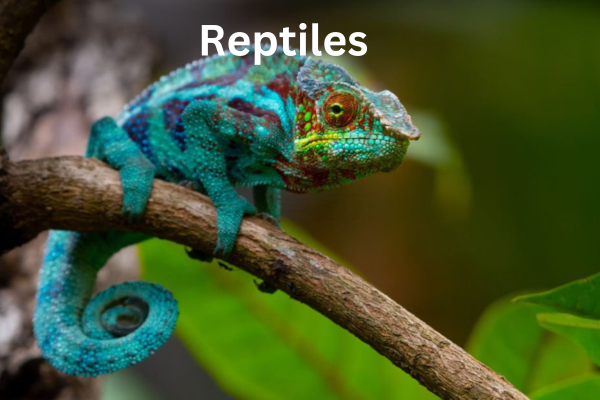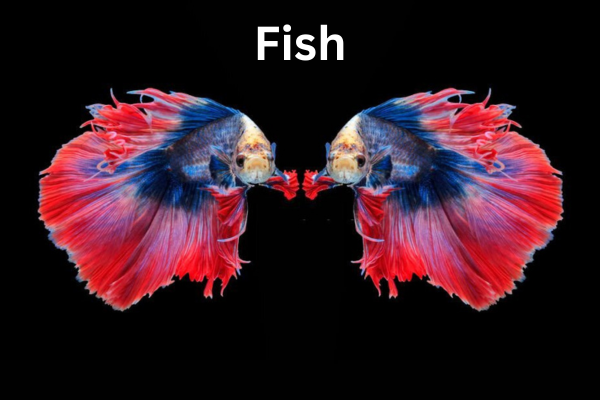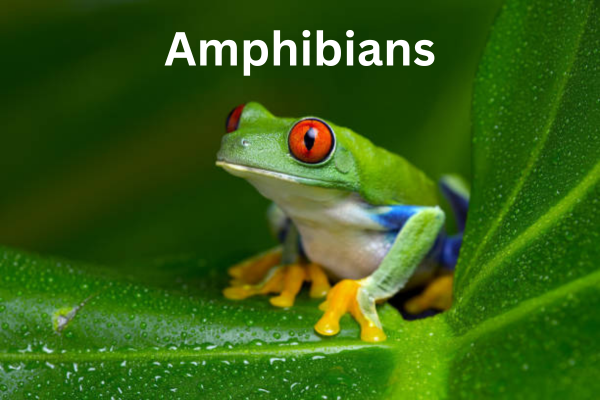Animals are creatures that live on Earth or in an ecosystem. They come in many shapes and sizes, from tiny insects to big mammals. There are two types of animals: those with a backbone (like birds, mammals, reptiles, and fish) and those without a backbone (like insects, spiders, snails, crabs, and conchs). Animals are essential for keeping the ecosystem in balance. People have kept animals as pets for thousands of years and continue learning more about them daily.
So if you see your pet dog or cat, remember that they are part of a long and exciting history that returns to the first animal!
The Different Types of Animals and Their Characteristics:
Animals have continued to diversify over the years, and as a result, there are now over 300 different types of animals alive today. But some of the most common types of animals include:
Mammals:

Mammals are a group of animals with backbones, two ears, a tail, and mammary glands. They are covered in fur or hair, give milk to their babies, and are warm-blooded. Examples of mammals include dogs, cats, bats, and humans. Mammals can stay warm in different temperatures because they have a layer of fat under their skin that insulates them. A unique thing about mammals is that they can make milk to feed their babies; no other animal group can do this!
A List of mammals:
Here’s a list of mammals categorized into different groups:
Land Mammals
- Lion
- Elephant
- Tiger
- Giraffe
- Cheetah
- Rhinoceros
- Hippopotamus
- Bear
- Wolf
- Deer
- Fox
- Kangaroo
- Zebra
- Horse
- Bison
- Gorilla
- Chimpanzee
- Orangutan
- Lemur
- Koala
Marine Mammals:
- Dolphin
- Whale
- Seal
- Sea lion
- Walrus
- Manatee
- Polar bear
Flying Mammals:
- Bat
- Flying squirrel
Endangered Mammals:
- Sumatran tiger
- Mountain gorilla
- Amur leopard
- Black rhinoceros
- Giant panda
- Sumatran orangutan
- Bornean orangutan
- Javan rhinoceros
- Cross River gorilla
- Hawksbill turtle
Exotic Mammals:
- Platypus
- Armadillo
- Aye-aye
- Quokka
- Sloth
- Fennec fox
- Meerkat
- Serval
- Red panda
- Ring-tailed lemur
Reptiles:

Reptiles are a fascinating and unique group of animals in several ways. One is their skin, which is covered in overlapping scales. These scales not only protect the reptile from predators and the elements, but they also help the reptile regulate its body temperature. They occupy an interesting place in the animal kingdom because they can adapt their appearances and behavior to suit their environment. This makes them some of the most versatile creatures on Earth. Reptiles can vary widely in size and shape, but they all share some standard features:
- They have two nostrils located near the front of their heads
- They have eyes on either side of their head
- They have well-developed ears that help them see in various directions
- Their tongues are long and flexible, allowing them to taste small food items.
Even if you find reptiles creepy, it is worth learning more about them to understand the animal kingdom better.
A List of Reptiles:
Here’s a list of reptiles categorized into different groups:
Snakes:
- Anaconda
- Boa constrictor
- Python
- King cobra
- Rattlesnake
- Black mamba
- Green tree python
- Corn snake
- Garter snake
Lizards:
- Komodo dragon
- Green iguana
- Chameleon
- Gila monster
- Monitor lizard
- Leopard gecko
- Bearded dragon
- Blue-tongued skink
Turtles and Tortoises:
- Green sea turtle
- Loggerhead turtle
- Leatherback turtle
- Box turtle
- Red-eared slider
- Painted turtle
- Galapagos tortoise
- African spurred tortoise
Crocodilians:
- Saltwater crocodile
- Nile crocodile
- American alligator
- Chinese alligator
- Indian gharial
- Spectacled caiman
Tuataras:
- Tuatara (singular species – Sphenodon punctatus)
Reptiles with Unique Characteristics:
- Horned lizard
- Frilled lizard
- Flying snake
- Basilisk lizard (also known as Jesus Christ lizard for its ability to run on water)
- Thorny devil (also known as a thorny dragon)
Fish:

Fish are aquatic vertebrates with a backbone and a spinal cord. They also have gills and scales on their skin. They also have fins along the sides of their body that help them swim. They have streamlined bodies and smooth skin, which allows them to move through the water quickly and easily. Some fish species are predatory, while others eat plants or plankton. Fish can breathe air and water, an essential feature for amphibians since it allows them to move between different habitats more easily.
A List of Fish:
Here’s a list of fish categorized into different groups:
Freshwater Fish:
- Bass
- Trout
- Catfish
- Salmon
- Pike
- Carp
- Tilapia
- Perch
- Walleye
- Crappie
- Sunfish
- Muskellunge
- Sturgeon
- Tuna
- Salmon
- Cod
- Swordfish
- Marlin
- Snapper
- Grouper
- Mahi-mahi
- Halibut
- Barracuda
- Flounder
- Mackerel
- Shark
Tropical Fish:
- Clownfish
- Angelfish
- Betta fish
- Guppies
- Neon tetra
- Discus fish
- Cardinal tetra
- Dwarf gourami
- Molly fish
- Swordtail fish
- Rainbow fish
- Cichlids
Exotic Fish:
- Arowana
- Arapaima
- Pufferfish
- Lionfish
- Archerfish
- Triggerfish
- Archerfish
- Electric eel
- Piranha
- Wrasse
Want to learn more about pet fish? Check out our article: The 10 Most Popular Types of Fish for Pets.
Birds:

Birds are a type of vertebrate that consists of feathers, bones, and a beak. They consume a wide variety of foods, from insects to fruit. Their feathers are unique in that they are not found on any other type of animal. Some birds can engage in flight, while others use their wings for other purposes (such as swimming or gliding). Birds have a metabolic process similar to mammals to generate body heat. They can be found worldwide in all sorts of habitats. The most giant bird on the planet is the nine-foot-tall ostrich, and the smallest is the bee hummingbird, a two-inch-long species.
A List of Birds:
Here’s a list of birds categorized into different groups:
Songbirds:
- Nightingale
- Robin
- Blackbird
- Cardinal
- Blue jay
- Sparrow
- Warbler
- Canary
- Finch
- Wren
- Thrush
- Mockingbird
Birds of Prey:
- Eagle
- Hawk
- Falcon
- Owl
- Kite
- Osprey
- Vulture
Waterbirds:
- Duck
- Swan
- Goose
- Heron
- Flamingo
- Pelican
- Crane
- Gull
- Cormorant
Seabirds:
- Albatross
- Seagull
- Puffin
- Tern
- Shearwater
- Petrel
Gamebirds:
- Pheasant
- Quail
- Grouse
- Partridge
- Turkey
Tropical Birds:
- Toucan
- Parrot
- Macaw
- Cockatoo
- Hummingbird
- Tropicbird
Flightless Birds:
- Ostrich
- Emu
- Kiwi
- Penguin
- Cassowary
- Rheas
Amphibians:

“Amphibia” is the official name for the class of amphibians. They are a group of animals that include both land and water creatures. Amphibians have a backbone (vertebrae), but their spinal cord is located outside the body instead of inside it, like in other vertebrates. They have an aquatic larval stage, which is when they develop gills and start to breathe air. They also lack lungs and gills, which help them, stay underwater for long periods. Amphibians can live on land and in water, making them versatile creatures. An estimated 6,000 different amphibians live on Earth today, but 90% of these species are frogs.
A List of Amphibians:
Here’s a list of amphibians categorized into different groups:
Frogs and Toads:
- American bullfrog
- Red-eyed tree frog
- Poison dart frog
- African clawed frog
- Green tree frog
- Cane toad
- Common toad
- Fire-bellied toad
- African dwarf frog
Salamanders and Newts:
- Tiger salamander
- Axolotl
- Fire salamander
- Eastern newt
- Hellbender
- Japanese giant salamander
- Marbled salamander
- Red-spotted newt
Caecilians:
- Ringed caecilian
- Tropical caecilian
- Congo caecilian
- Siphonops annulatus
- Limbless caecilian
Invertebrates:

Invertebrates are animals without a backbone. They come in many shapes and sizes, like bugs, spiders, and worms. They live in different places, from the ocean to the forest. Invertebrates are essential for nature because they help pollinate and break down dead plants and animals. They are diverse and exciting creatures that play a significant role in keeping our world balanced.
A List of Invertebrates:
Here’s a list of Invertebrates categorized into different groups:
Insects:
- Butterfly
- Ant
- Bee
- Beetle
- Grasshopper
- Mosquito
- Ladybug
- Dragonfly
- Moth
- Caterpillar
Spiders:
- Tarantula
- Black widow spider
- Jumping spider
- Orb-weaver spider
- Wolf spider
- Daddy longlegs spider
Mollusks:
- Snail
- Slug
- Octopus
- Squid
- Clam
- Mussel
- Oyster
- Nautilus
Crustaceans:
- Crab
- Lobster
- Shrimp
- Barnacle
- Crawfish
- Krill
Worms:
- Earthworm
- Leech
- Flatworm
- Roundworm
Jellyfish and Cnidarians:
- Jellyfish
- Coral
- Sea anemone
- Hydra
Echinoderms:
- Starfish
- Sea urchin
- Sea cucumber
- Sand dollar
Sponges:
- Bath sponge
- Glass sponge
- Tube sponge
Insects:

Insects are tiny arthropods that have a head, thorax, and abdomen. They have two pairs of antennae and six legs. Most insects live on the ground (although some live in the water), but a few species spend part of their life in the air. They can be found in almost every environment on Earth and are present in high numbers. Insects range from tiny creatures like flies to huge ones like beetles!
A List of Insects:
Here’s a list of insects categorized into different groups:
Butterflies and Moths:
- Monarch butterfly
- Swallowtail butterfly
- Painted lady butterfly
- Luna moth
- Atlas moth
- Cabbage white butterfly
Bees and Wasps:
- Honey bee
- Bumblebee
- Carpenter bee
- Yellow jacket wasp
- Paper wasp
- Mud dauber wasp
Ants:
- Fire ant
- Carpenter ant
- Bullet ant
- Army ant
- Weaver ant
- Harvester ant
Beetles:
- Ladybug beetle
- Ground beetle
- Tiger beetle
- Stag beetle
- Scarab beetle
- Jewel beetle
Grasshoppers and Crickets:
- Grasshopper
- Katydid
- Cricket
- Mole cricket
- Conehead cricket
- Bush-cricket
Flies:
- Housefly
- Fruit fly
- Horse fly
- Mosquito
- Hoverfly
- Robber fly
Praying Mantises:
- Praying mantis
- Orchid mantis
- Ghost mantis
- Stick mantis
- Chinese mantis
- Carolina mantis
Conclusion:
In conclusion, animals are fascinating creatures that play an essential role in our world. They come in all shapes and sizes and have many behaviors. Animals can be our companions, our food, and our research subjects. They can also be our teachers, helping us to learn about the natural world and our place in it.
We owe it to animals to treat them with respect and compassion. We should do everything we can to protect them from harm and ensure they have a good quality of life. Animals are a part of our world, and we should all do our part to ensure they are safe and happy.
What is an animal simple definition?
An animal is a living organism, not a plant or a fungus. Animals can drive around independently and need to eat other organisms to survive.
What can we do to help animals?
There are many things that we can do to help animals, including:
- Conserving their habitats
- Reducing our demand for animal products
- Supporting organizations that are working to protect animals
What are the different types of animals?
Animals can be classified into different types based on physical characteristics, behavior, and habitat. Some of the most common types of animals include mammals, birds, reptiles, amphibians, and fish.
How many different animal species are there?
There are an estimated 8.7 million different animal species on Earth. This includes all types of animals, from the tiniest insects to the giant whales. Most animal species are insects, with over 6 million different species.
What are the most endangered animals?
The most endangered animals are those that are at risk of extinction. There are many reasons why an animal might become endangered, including habitat loss, poaching, and climate change. Some of the most endangered animals include the black rhinoceros, the giant panda, and the vaquita.
What are the most common animal behaviors?
Animals exhibit a wide range of behaviors, from simple to complex. Some of the most common animal behaviors include:
- Foraging: the act of searching for and finding food
- Social behavior: living in groups
- Communication: sending and receiving information
- Reproduction: creating new offspring
How do animals communicate?
Animals communicate with each other in a variety of ways, including vocalizations, body language, and scent marking. Communication helps animals to find mates, defend their territory, and raise their young.
What are the different types of animal habitats?
Animals can be found in various habitats, including forests, grasslands, deserts, oceans, and even the Arctic. The type of habitat that an animal lives in determines its physical characteristics and behavior.
What are the challenges facing animals today?
Animals face many challenges today, including habitat loss, poaching, and climate change. These challenges are putting many animal species at risk of extinction.